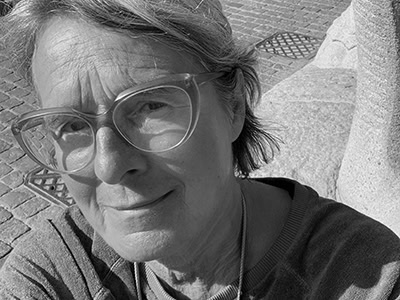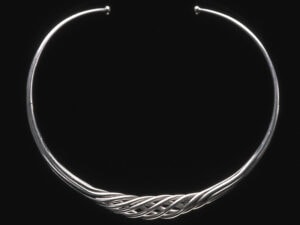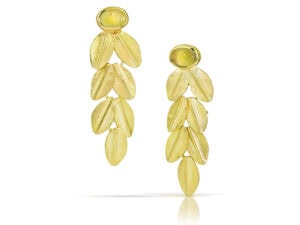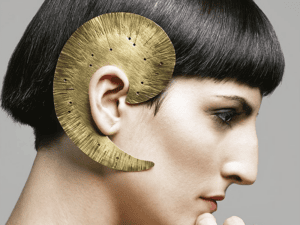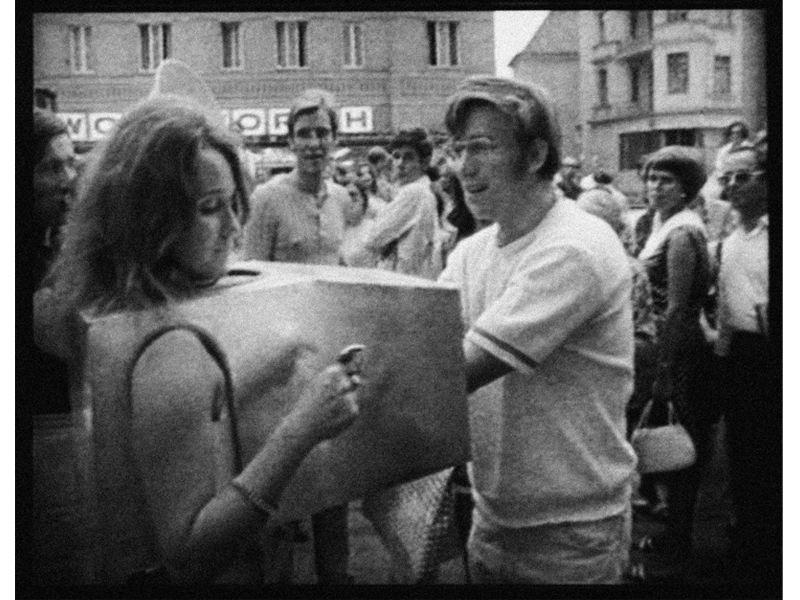
The late 1960s were turbulent times. Liberation, emancipation, and democratization were the truths of the day. Social codes were exceeded, and people enjoyed the freedom of the sexual revolution. Taking off one’s clothes publicly, for instance at festivals like Woodstock, was a sign of liberation. The first naked woman to appear on television caused general indignation and a parliamentary debate about decency. Yet others declared the woman as liberated and a genuine feminist.[1]
Female artists were the first to question woman’s nakedness from a gender point of view. When Austrian artist VALIE EXPORT (born in 1940 in Linz)[2] began addressing gender issues in her work of the 1960s, she embraced a different kind of radicalism than her male colleagues from the Viennese art scene, dominated by Viennese Actionists like Günter Brus and Hermann Nitsch, whose performances and happenings had a destructive and bloody character. VALIE EXPORT confronted passers-by in a more intimate—but no less intimidating—way, framing the female body as subject of violence, sexual harassment, and desire. Her explicit performances about sexuality, power, and oppression, performed in the streets or cinemas, caused discomfort, confusion, and anger. Tapp und Tastkino (Touch Cinema) elaborates on the idea of “the gaze,” a term in psychology and philosophy referring amongst other things to the awareness of being an object.

In the period 1968–1971, VALIE EXPORT went out on the streets of 10 European cities with Touch Cinema, a box worn on top of her bare breast. She invited people, men and women equally, to approach her and put their hands through the box’s curtains and touch her breasts, as the artist looked at her watch to time the proceeding, while concentrating on becoming totally detached from any emotion or feeling. Later she explained the act of exposing her breasts to the hands of strangers as “women’s first steps from object to subject.”[3] Now it was the woman who was in control—she decided about place, act, and time.
In the Netherlands, around the same period, the couple Emmy van Leersum and Gijs Bakker designed their Clothing Suggestions, which were presented on January 30, 1970, in a fine art gallery in Amsterdam to and by a select group of people, friends, and colleagues of the artists. The Clothing Suggestions presented another way of thinking about the fusion of ornament and clothing. They were not consciously part of a bigger discourse on gender, or of an artistic movement, nor was it developed in a vacuum.[4] The Clothing Suggestions consisted of elastic gender-neutral white and black jumpsuits, with protruding elements created by stretching and hardening the fabric, on the articulations of the body. Gender differences were emphasized by a cube designed in front of the penis, a closed box form in front of the female breasts, and an open box that framed and presented the breasts as fruits for picking. The open breast frame was designed by Bakker as an answer to the bra, which he understood as a means for women to conceal as well as to present their breasts the best way. His solution “to display the breasts in a genuine way”[5] was to exhibit the bare breasts in a framed showcase.

Although the outcome of different creative contexts, VALIE EXPORT’s Touch Cinema and Bakker’s framed breast display triggered comparable reactions. In the latter case, people didn’t know where to look. The woman wearing the open breast-framed suit—a gallerist from Ghent—afterwards declared that she really enjoyed watching this discomfort generated among the Amsterdam avant-garde.[6] Meanwhile, VALIE EXPORT invited passers-by to do something they had never dreamed of: touching bare female breasts in public. A feminist artist using her body in her work, she put the participants in the performance in a weird in-between position of sensory overload (one could touch her breast in public …) and frustrated access (… but had to do it through a mini-curtain, which basically cut off touch from the rest of the senses), while at the same time being watched by onlookers. Bakker used female bodies to make statements about jewelry and fashion. The framed breasts confronted the audience with their own inhibition, and frustrated the act of looking. Besides obvious differences in participation, context, and artistic aim, both works reveal, and put in play, the sensitivities of the time.

[1] Dutch television claims to have shown the first totally naked woman on TV, on October 9, 1967. It resulted in a debate in Dutch parliament, where conservative parties asked for enactment; it was covered as a news item all over the world.
[2] VALIE EXPORT is the name she chose for herself in 1967, declining her father’s family name, as well as her former husband’s. Written in capitals, it acted as a new identity as well as an artistic logo.
[3] Roswitha Mueller, VALIE EXPORT: Fragments of the Imagination (Bloomington, Indiana: Indiana University Press, 1994), 17.
[4] Van Leersum and Bakker were very interested in everything contemporary: fine art, fashion, film, and music. Recently, when I showed Bakker VALIE EXPORT’s Touch Cinema, he told me he had never seen it before.

